Rules on the movement of goods between EU and UK, for new post-Brexit Era
Importing post-Brexit
Great Britain (GB) and Northern Ireland (NI) are formally no longer a member of the European Union (EU). Importing is a process that a lot more Irish companies will have to become familiar with.
Failure to do so will result in goods being delayed at customs – impacting supply chains – as well as opening the risk of compliance audits from Revenue.
So, when importing into Ireland, there are three things you want to be sure of-
You are compliant with EU legislation and revenue requirements.
Your goods arrive securely and on time.
You are being as cost–effective as possible.
Documentation requirement while importing post-Brexit
The central document for all imports and exports is the SAD or Single Administrative Document. The SAD form is harmonised internationally. It is used both for export and import declarations as well as in transit through other jurisdictions to a final point of exit or entry within the EU and third countries. The SAD document supports several different types of declarations covering up to 99 Items.
The SAD form identifies everyone involved in the process along with all the data required on your goods such as tariff classification, origin valuation, previous and unintended customs procedure, terms of trade etc.
Make sure that your SAD form is complete and accurate else there could be a delay in the movement of goods.
Besides the SAD form, you will also require submitting a few other documents to Revenue such as –
- The invoice for your goods,
- The airway bill or bill of lading from your airfreight or shipping company,
- The consignment note (CRM) from your Freight Forwarder
- A certificate of origin
- Packing List
- Other documents, depending on the type of goods.
Utilizing AEP (Automatic Entry Processing), revenue will validate and clear your customs declarations based on the information you provided and accordingly will calculate import duties that may be due.
Once the AEP system has accepted your declaration, you will get a colour–coded notification.
GREEN– Your Goods cleared by Revenue.
ORANGE– Your goods need a document check before Revenue will clear your goods.
RED– You goods need both a document check and a physical examination for clearance.
Why choose Declaron?
Navigating customs clearance can be an overwhelming experience but with Declaron you can ensure that the correct and complete information goes to the revenue in time, and you get your goods on time. We have received our Authorised Economic Operator (AEO) status, which certifies that Declaron now upholds the standard in relation to –
- Safety and security
- Systems to manage commercial records
- Customs compliance
- Financial competence
- Professional qualifications
If you have any more question around Customs, please feel free to get in touch. Additionally, take this 5-minute assessment to determine your business readiness for customs and whether our service is a suitable fit for your unique business needs.





Leave a Reply
Want to join the discussion?Feel free to contribute!